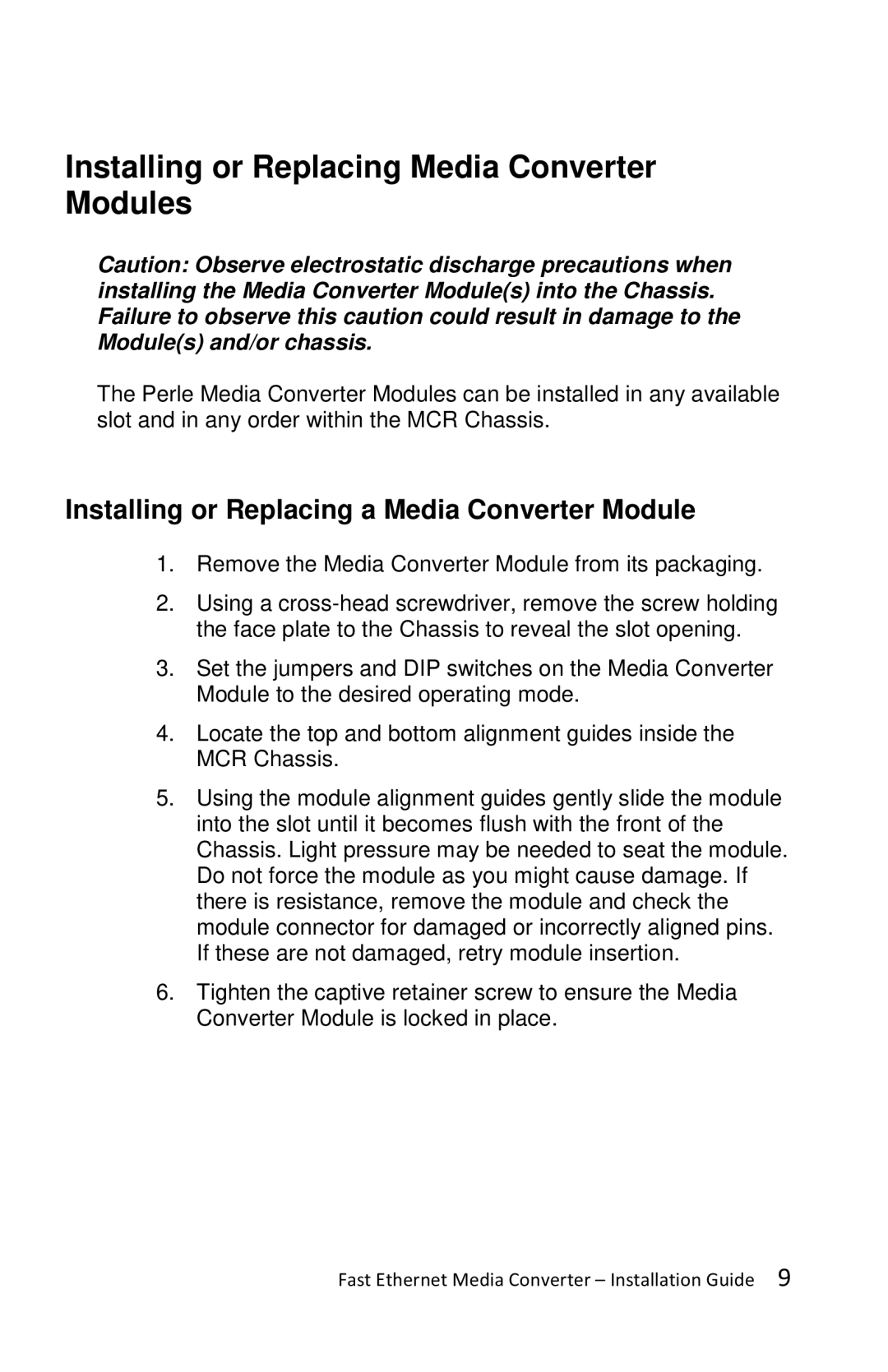C-100-XXXXX specifications
The Perle Systems C-100-XXXXX series is a robust line of serial device servers designed for reliable connectivity and management of serial devices over Ethernet networks. These versatile devices ensure seamless integration between legacy serial devices and modern IP-based networks, making them ideal for various applications such as industrial automation, telecommunications, and remote monitoring.One of the standout features of the C-100-XXXXX series is its ability to support multiple serial ports, enabling the connection of several devices simultaneously. This multi-port functionality allows organizations to efficiently manage several serial devices from a single network point, significantly simplifying device administration.
The C-100-XXXXX series employs advanced technologies, including the use of secure TCP/IP protocols for data transmission. This ensures that information remains protected while being transmitted over the network. For enhanced security, the device server supports SSH (Secure Shell) and SSL (Secure Sockets Layer) protocols, providing an additional layer of encryption for sensitive data exchanges.
In terms of performance, the C-100-XXXXX series exhibits low latency and high throughput, making it suitable for applications requiring real-time data processing. The device features a user-friendly web interface for configuration and management, allowing users to easily set up and monitor connected devices from a central location. Network administrators will appreciate the comprehensive logging and diagnostic capabilities, which facilitate quick troubleshooting and performance monitoring.
The C-100-XXXXX is designed with reliability in mind. It incorporates features such as dual power inputs to ensure continuous operation, even in case of a power failure. The rugged design and durable components make it suitable for deployment in challenging environments, such as factories or outdoor installations.
Flexibility is another key characteristic of the C-100-XXXXX series, as it supports a wide array of serial communication protocols, including RS-232, RS-485, and RS-422. This compatibility allows for the integration of various devices regardless of their specific communication standards.
Overall, the Perle Systems C-100-XXXXX series provides a powerful, secure, and flexible solution for connecting serial devices to the Ethernet, enabling organizations to modernize their infrastructure and improve operational efficiency. With its combination of advanced features and reliable performance, this device server stands out as a preferred choice for businesses looking to bridge the gap between legacy infrastructure and contemporary networked environments.
